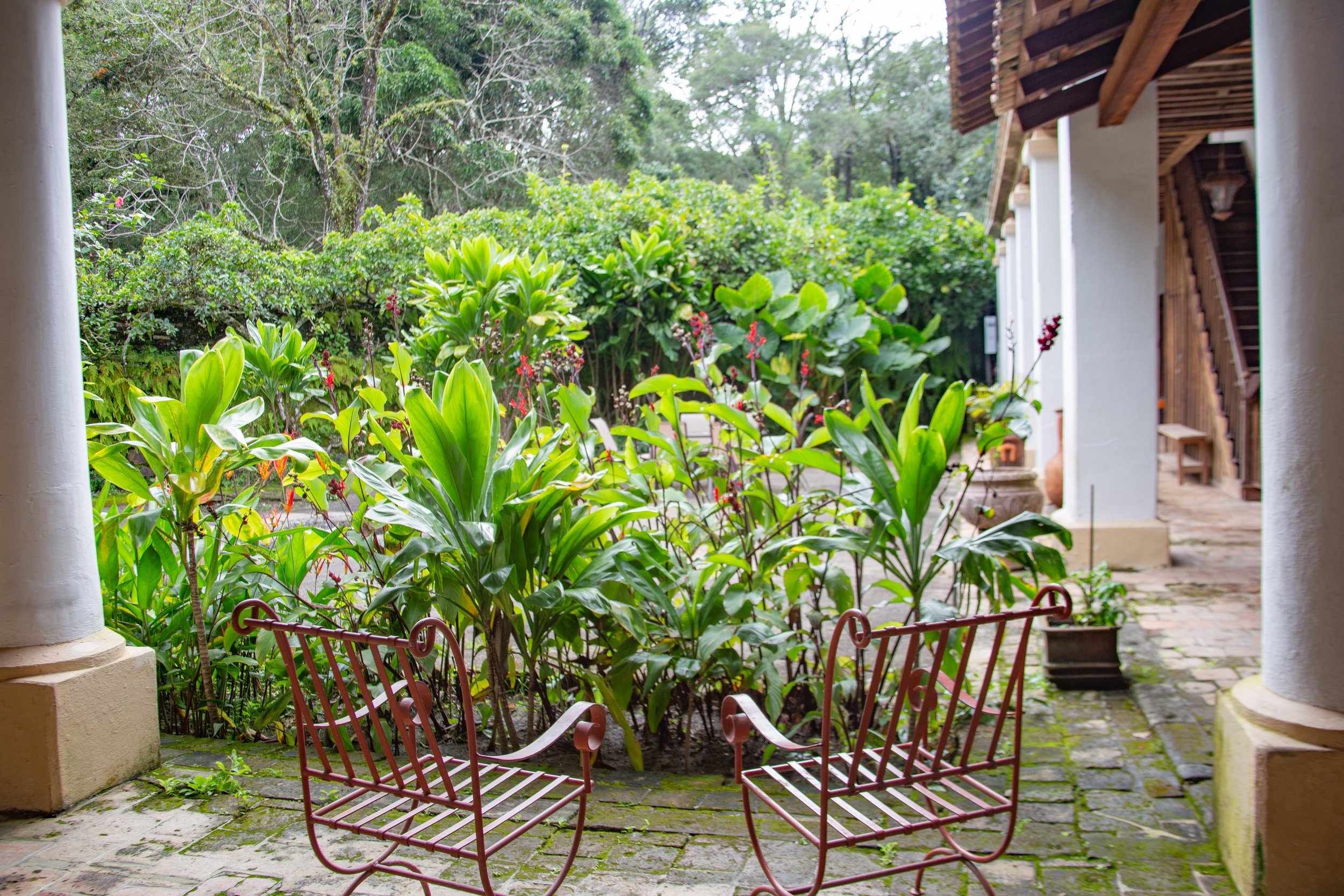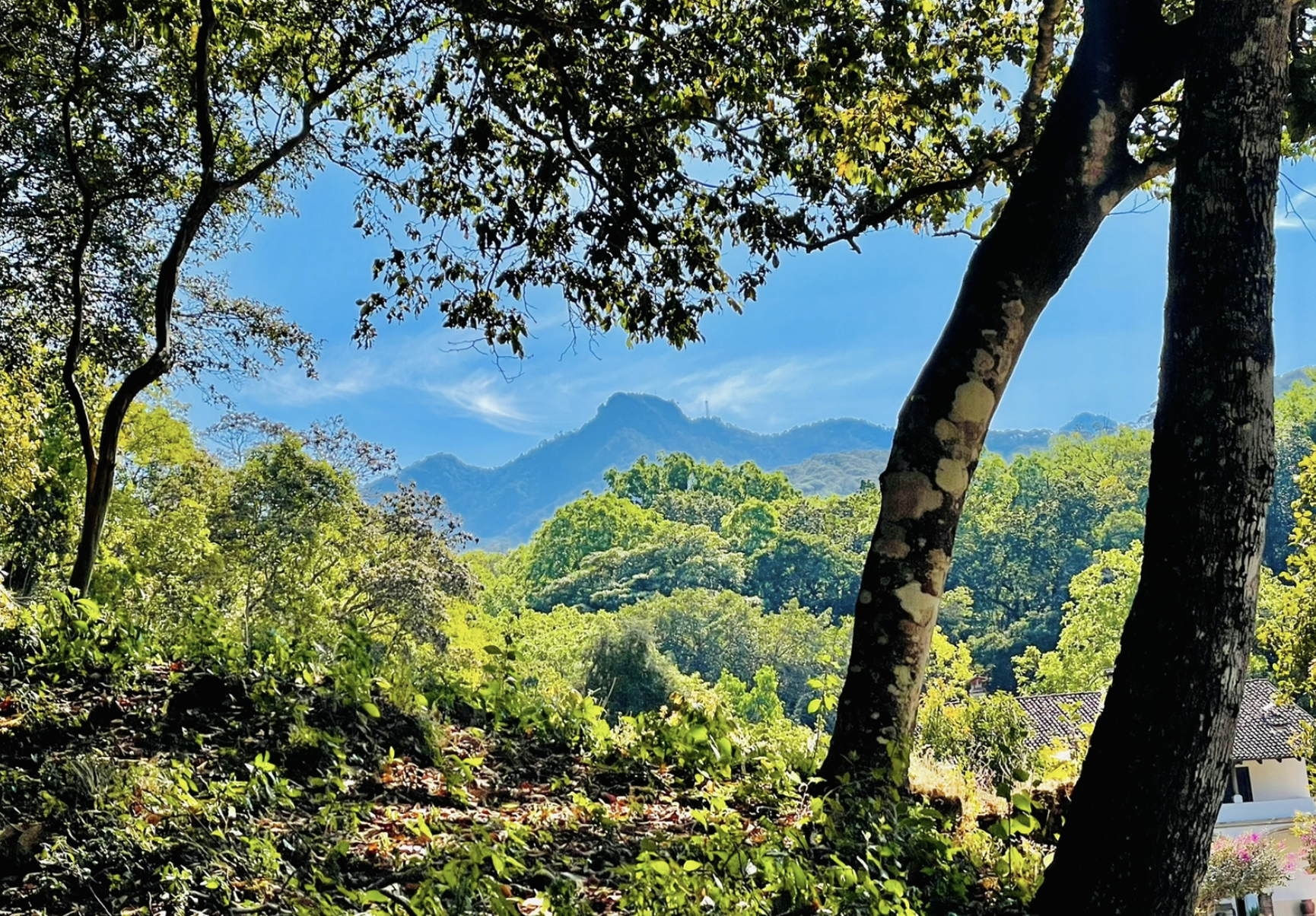Where time stands still …
Welcome to the Hacienda Jalisco
Nestled in San Sebastian del Oeste, the Hacienda Jalisco was built 225 years ago by the Spanish guard to hold and protect the output of silver mines of San Sebastian, in preparation for shipment to Spain. Staying at the Hacienda will take travelers back 150 years to get a taste of what life was like in the Spanish colonial era.
The term hacienda comes from ‘hacer’ which means to make something … in this case it was large estate where silver was produced. The word Jalisco comes from the Náhuatl words xali ixco meaning sandy surface. A massive structure with two foot-thick adobe and rock walls, great wooden shutters and doors, connected by massive ceilings and skirted by faded fresco paintings. Each of the five individual guest rooms upstairs are adorned with antique furniture pieces, large bathrooms and fireplaces. Oil lamps were used before the new owner converted the property to solar power. The ground level contains a grand fireplace in the living room, bar museum, formal dining room, two main floor accommodations, a servants' quarters, wine cellar, kitchen, laundry and split bathroom. Antiques, books, original maps, archeological artifacts, mining tools, and ledgers throughout rooms and on the walls, highlight the Hacienda's colourful history. An impressive wrap-around balcony offers views of the Sierra Madre range on the second floor with three beautifully restored and decorated hotel rooms.
Many Hollywood celebrities, such as Peter O’Toole, Elizabeth Taylor and Richard Burton, have stayed at Hacienda Jalisco. John Huston was a close friend of expatriate Bud Acord, a Hollywood artistic type who was responsible for renovating and maintaining the property for many years as its proprietor. He arrived in the early 1960s and found the 1840s style Hacienda Jalisco in a greatly dilapidated condition. Acord met film director Huston when he was filming the “Night of the Iguana” near Mismaloya Beach, a few miles South of Puerto Vallarta.
During its mining heyday, the European mine managers and their families lived in the upstairs rooms overlooking the courtyard where ore was pulverized using big grinding wheels driven by a water power. The stone wall ovens, used in the smelting operations, reached high temperatures from having the tallest chimney in the area. Remnants of the chimney still remain behind the ovens. After extraction, the silver was melted into bars for transport. With the various toxic chemicals used to extract the silver from the ore, it was a dirty and unforgiving operation performed by the local Indians, but yielded riches for Spain. The rock in the mines was broken down with pick axes and carried out by workers in backpacks to waiting carts which were transported by mules to the smelters. The mine workers were paid in chits which they could cash out in the company stores
The mining boom ended with the Mexican Revolution in 1910 which dethroned the long-time, autocratic president at the time, Porfirio Diaz. Popular Mexican figures, such as Francisco Madero, Pancho Villa and Emiliano Zapata arose to take part in the rebellion against Díaz, and separate efforts eventually coalesced into what became known as the Mexican Revolution. Due to the turmoil and bloodshed, workers at the mines ran away, and during the subsequent eleven years of war, most of the furnishings and equipment were looted from the property. The hacienda remained abandoned for almost half a century, until Bud Acord purchased it.
The mines in San Sebastien were, in part, responsible for the start of Puerto Vallarta. Then known as Las Peñas and consisting of just a few huts at the mouth of the Rio Cuale, it was used to supply the mines with salt which was taken by mules up to San Sebastian and other mines in the High Sierras and used in the smelting process to extract silver and other materials from the ore. The silver and gold from the mines was sent, again by mule train through Guadalajara and Mexico City to Veracruz, where it was sent, once a year, to Spain.
Today, it’s rumored that silver is still to be found in the surrounding hills, buried by former mine owners who feared bandidos. The owners never returned to claim it after the revolution. Ghosts have also been reported around the hacienda by persons staying overnight on the grounds.
In 2010, Endeavour Silver Corp. announced that it has acquired a multi-year option to purchase the San Sebastian silver-gold properties in Jalisco State, Mexico from IMMSA (Grupo Mexico), one of the largest mining companies in Mexico. The mine which has been dormant since its demise may re-open when the price of silver recovers from its current depressed levels. There is local controversy over the fact that the company plans open pit mining, thus changing the pastoral landscape of the area.
The road to San Sebastien was recently paved, making the trip up in to the Sierra Madre Occidental mountains an easy drive from Puerto Vallarta, only 1½ to 2 hour drive. Watch for "topes" — so called speed bumps, many with no painted warning stripes, cows, dogs and pot holes on the way up! Check out the Jesus’s bakery at the second bridge on the right as you are heading up.
If you are looking for a place to disconnect, and reconnect with yourself, this is the place! Put down your phone, and work emails, and delight in the peace and quiet of the surrounding nature. Find out about our tours and excursions, here.





